Tags: wildlife
Bivalves and Waterfront Restoration

Melody Simon is a senior at the New York Harbor School and environmental science intern here at Freshkills Park. Here she tells us a bit about oyster restoration in New York City.
Bivalves are returning to our waters. Bivalves such as oysters, mussels, and clams were once very populated organisms in New York Harbor.
...MOREWatch: Osprey Nest Over Main Creek

Every year, Osprey (Pandion halibuts) make their summer homes at Freshkills Park, where they build nests on high structures above the Park’s creeks. They hunt for fish in the waterways and raise their young. Since 2018, parks researchers have been monitoring the breeding success of the Osprey at Freshkills Park.
...MOREFourth Year of Bird Banding Reveals New Species
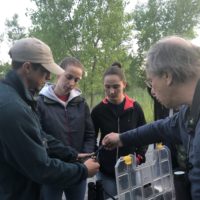
Monitoring Avian Productivity and Survivorship
This summer, researchers from College of Staten Island completed their fourth year of Monitoring Avian Productivity and Survivorship (MAPS) bird banding at Freshkills Park. MAPS is a collaborative, continent-wide research effort coordinated by the Institute for Bird Populations, with over 1,200 participant banding stations.
...MOREFish Monitoring Seining Program Continues in 2019
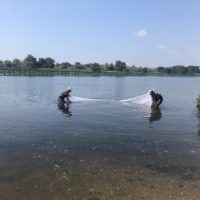
Throughout August, Freshkills Park researchers have been monitoring the diversity of fish species in the park’s Main Creek. This research has been ongoing since 2016 as a means of staying up to date on the health and quality of the aquatic ecosystems at the park.
...MORERed Fox Monitoring Project at Freshkills Park
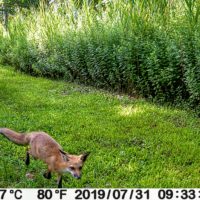
The red fox, one of Staten Island’s rarest and most elusive mammals, is now living in what was once the world’s largest landfill. Prompted by occasional sightings, our science team has set up specially designed motion sensor cameras to capture any movement of wildlife within Freshkills Park.
...MOREPollinators at Freshkills Park
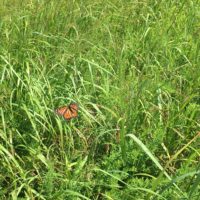
Bees, butterflies, hummingbirds, and bats are just a few examples of the animals that we call pollinators and that we rely on for approximately one third of our food supply and 90% of our world’s flowering plants. When visiting plants for food or shelter, pollinators attract pollen – often in fascinating ways – to themselves and later deposit it on the tops of flowers of the same species, thereby allowing for the creation of new seeds and reproduction.
...MOREHighlights from the June 30th Open Hours Event
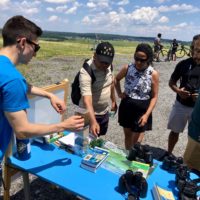
Beautiful sunny weather and clear blue skies provided the perfect conditions to welcome visitors to Freshkills Park on June 30 for the first ever Open Hours. As construction continues in North Park Phase One, this event allowed hundreds of visitors the chance to see the rolling hills and diverse wildlife of Freshkills for themselves before the park can officially open.
...MOREEnvironmental Science Intern: Galen Oettel

Galen Oettel is an Environmental Science Intern for Freshkills Park. Born and raised in New York City, he’s currently a rising junior at Clark University in Worcester, Massachusetts. Galen is majoring in Environmental Science and plans to pursue a graduate degree in Geographic Information Systems (GIS).
...MORENest Monitoring Shows Osprey Population on the Rise
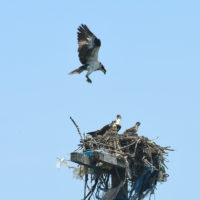
By early April, ospreys had arrived at Freshkills Park after spending the winter in warmer places. Nicknamed “fish hawks,” these large raptors like being close to shallow water for easy access to food. The birds quickly got to work building their summer homes on tall platforms close to the creeks.
...MORECity Nature Challenge Provides A Snapshot of Urban Biodiversity
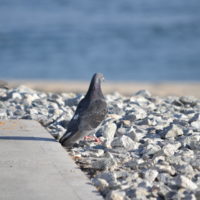
In April 2017, sixteen U.S. cities participated in the City Nature Challenge (CNC). For this multi-day event, urban residents competed to observe the most species in their city, at the same time collecting data that conveys a snapshot of the local biodiversity.
...MORENYC Parks is Mapping Raptor Nests in Freshkills Park and Beyond
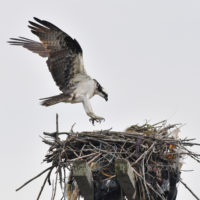
In 2016, NYC Parks created a Wildlife Unit in response to the city’s rising wildlife population and the challenges they present—more than 600 native wildlife species currently call our city home. The unit serves as an informed resource for citizens and policymakers, and aims to create a future where urban animals are an understood and appreciated part of the city.
...MOREWetland Restoration Monitoring
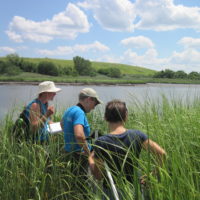
In mid-August, Freshkills Park staff and interns conducted the annual monitoring of the North Park Wetland Restoration. Each year we record how the native plants are doing, whether any invasive plant species are coming back in, and what kinds of wildlife are using the restored site.
...MORESecret Lives of City Vermin
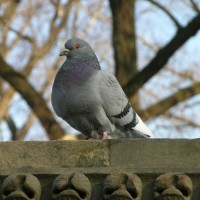
Ask people to name an animal that lives in New York City, and chances are they’ll pick one of the following: Rats, pigeons, or cockroaches.
And they’ll probably have some horror stories to tell about them.
Now, we could go on and on here at the Freshkills Park office about how there are thousands of different animal species living within the boundaries of NYC, including many that are rare, but today we’d like to take a minute to highlight some aspects of those lesser-loved, often only known for their traits that are in conflict with human society, animals that call NYC home.
...MOREThinking Outside the Bird Box

Freshkills Park will soon launch a digital app that will tweet photos of birds like tree swallows and house wrens from inside their bird boxes at the Park. This project will broadcast the ongoing ecological restoration of the Park, create new potentials in the field of scientific research, and highlight a research project investigating the health of the Park’s cavity nesting birds.
...MOREWhy Did the Turtle Cross the Road?
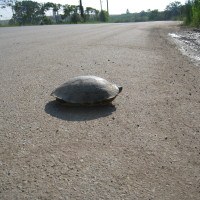
Every June, New York’s native turtles migrate in search of sandy areas to lay their eggs. According to the New York State Department of Environmental Conservation (DEC), thousands of turtles are killed each year when they are struck by vehicles as they move to their nesting areas.
...MOREPanel Discussion: Re-envisioning Post-Industrial Public Landscapes
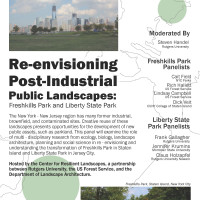
Freshkills Park’s Manager for Science & Research Development Dr. Cait Field will participate in a panel discussion at Rutgers University on Wednesday, April 27th. Called Re-envisioning Post-Industrial Public Landscapes, the discussion will include panelists from Freshkills Park and Liberty State Park in Jersey City.
...MOREFreshkills Park, Fifteen Years after Landfill Closure

Fifteen years ago this week, the final barge of household garbage arrived at Fresh Kills Landfill. To celebrate this milestone, the website’s new interactive landfill-to-park timeline illustrates almost 100 years of changes in the area.
The last barge to Fresh Kills marked the end of 53 years of landfill operations.
...MOREBirds Count: Winter 2016
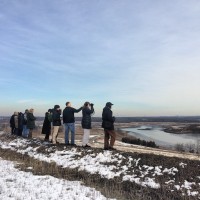
On President’s Day weekend, millions of birds were recorded as part of the Great Backyard Bird Count (GBBC). According to the New York Times, this was the 19th year that both amateur and expert ornithologists worldwide have contributed bird sightings to this citizen science project, run by the Cornell Lab of Ornithology, the National Audubon Society and Bird Studies of Canada.
...MORESaw Mill Creek and the First NYC Wetlands Mitigation Bank
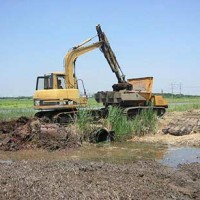
New York City is in the process of creating its first wetland mitigation bank in the marshlands surrounding Saw Mill Creek on Staten Island. Saw Mill Creek, a tributary to Prall’s Creek and the Arthur Kill, is encircled by the largest expanse of remaining salt marsh along Staten Island’s west shore.
...MORESwainson’s Hawk Sighting at East Mound
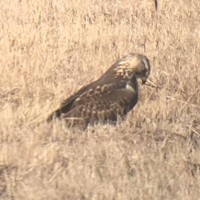
Researchers found a rare Swainson’s hawk at Freshkills Park’s East Mound on Tuesday morning. Dr. Richard Veit of The College of Staten Island described the hawk as a western North American grasslands specialist bird.
...MORE



